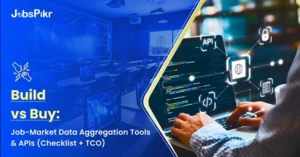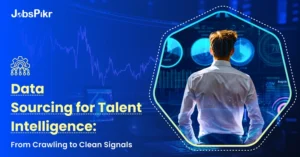- Statistics of return on investment in college education
- 1. The Soaring Cost Mountain and the Debt Abyss
- 2. The Employment Paradox: Underemployment and the Field Mismatch
- 3. The Stark Reality of Socioeconomic, Racial, and Gender Disparities
- 4. The Evolving Earnings Premium and Mobility Mirage
- 5. The STEM Exception and the Advanced Degree Spiral
- Key findings on the return on investment ROI on college education in the US
- Conclusion on return on investment
In the United States, tuition for college education has become increasingly expensive. In order to justify this expense, it is important to understand and calculate the return on investment (ROI) of a college degree. This analysis will compare various factors, including income potential, unemployment rates, and cost of attendance, to determine the overall value of a college degree in the USA.
The return on investment of college education in the United States is not always what it seems for many students who pay extremely high tuition rates at private colleges and universities. A recent study by the Brookings Institution revealed that low-income students who enter elite private schools leave with heavy debt loads but don’t increase their earning power because they are unable to find well-paying jobs after graduation.
Moreover, the study found that nearly half of all graduates from top-tier liberal arts colleges took positions in relatively low-skilled fields within five years of graduating—positions that did not require bachelor’s degrees. Some graduates changed careers to avoid dead-end paths or took lower-salary positions instead of continuing in a field related to their major, which may not help with return on investment.
“Students are making choices that will have a profound impact on the rest of their lives,” said Paul Taylor, vice president for special projects at the Pew Research Center. “In some cases, students are going to end up in careers that, frankly, don’t require a college degree.”
Statistics of return on investment in college education
Many top-tier universities in the USA (United States) graduate most of their students in low-skilled fields such as education, social services, and health care—careers with relatively low starting salaries. Only about one in four American graduates who majored in science or engineering were employed in those fields within five years.
The study found that even though the average tuition at leading private colleges was about $30,000 annually ($120,000 for four years), room and board can bring total costs up to $47,343 a year—almost 35% more than the median annual household income. The study found that only 18 percent of students from low-income families at top-tier schools have professional jobs nine years after graduation, compared with 50% of children from wealthy households.
Employers often look for education beyond high school as a measure of a candidate’s ability to be successful in a given career path and/or industry–and find someone who is going to take the initiative and show initiative. The Brookings Institution report has revealed that college graduates across all groups are moving into fields that do not require their degree or seeking further education because they can’t find employment in their chosen profession.
According to U.S News & World Report, the majority of bachelor’s degree holders either do not pursue advanced degrees or return to higher education later. The U.S. Bureau of Labor Statistics data shows that ten years after receiving their bachelor’s degree, 62% of students had failed to attain a higher level of education, compared with 35% in 1970 when the figures were first collected.
1. The Soaring Cost Mountain and the Debt Abyss
The financial barrier to entry has reached staggering heights:
- Hyperinflation in Tuition & Fees: As highlighted, leading private universities now command tuition fees nearing $30,000 annually, with total costs (including room, board, books, fees) exceeding $47,000 per year. This figure isn’t an outlier; it’s representative of a trend. According to the College Board, the average published tuition, fees, room, and board for 2023-24 was:
- $41,540 at private nonprofit four-year institutions.
- $23,630 for out-of-state students at public four-year institutions.
- $11,260 for in-state students at public four-year institutions (though this often excludes significant living costs).
- Costs vs. Income: The comparison to median household income is stark. The U.S. Census Bureau reported a 2022 median household income of $74,580. A single year at a top private university, therefore, consumes over 63% of the median annual household income. Four years? Potentially exceeding 250% of that income – an impossible burden without massive debt or substantial existing wealth.
- The Debt Tsunami: To bridge this gap, students borrow heavily. Federal Reserve data shows total U.S. student loan debt surpassing $1.77 trillion in Q1 2024, held by over 43 million borrowers. The average federal student loan debt per borrower is approximately $37,088, but this masks the reality for many graduates of expensive programs who carry six-figure burdens.
- The Long Shadow of Debt: This debt isn’t abstract; it has tangible, long-term consequences.
- Delayed Milestones: Homeownership, marriage, starting a family, and retirement savings are often postponed for years, sometimes decades. Studies by the Federal Reserve consistently link high student debt to lower rates of homeownership among young adults.
- Career Constriction: Graduates may feel pressured to prioritize high-paying jobs over careers aligned with their passions or societal needs (like education or social work) simply to service their debt.
- Wealth Gap Exacerbation: Debt repayment siphons off income that could be invested or saved, hindering wealth accumulation, particularly for first-generation and low-income students who start with fewer familial resources. This perpetuates intergenerational inequality.
2. The Employment Paradox: Underemployment and the Field Mismatch
Graduation doesn’t guarantee smooth entry into a high-paying, degree-required career:
- The STEM Conundrum: The statistic that only about one in four American science or engineering graduates work in their field within five years is alarming. This represents a massive societal investment in specialized education yielding suboptimal utilization. Potential reasons include:
- Industry Capacity: Limited entry-level positions in certain high-specialization STEM fields.
- Work Environment: Reports of demanding hours, burnout, or workplace culture driving talent away.
- Credential Inflation: Some “STEM” jobs may not actually require the depth of a full bachelor’s degree for entry-level tasks.
- Lateral Movement: Graduates leveraging analytical skills in finance, consulting, or management instead of pure technical roles.
- Pervasive Underemployment: The Brookings Institution’s findings are echoed widely. A 2023 report by the Burning Glass Institute and the Strada Education Foundation found that a staggering 52% of college graduates are underemployed a year after graduation (working in jobs that typically do not require a bachelor’s degree). Even more concerning, 10 years after graduation, 45% remain underemployed. Fields like Communications, Psychology, and the Performing Arts show particularly high rates.
- The “Low-Skilled” Graduate Majority: As noted, a significant portion of graduates from even elite institutions enter fields like education, social services, and healthcare support roles – sectors historically offering lower starting salaries relative to the cost of the degree obtained. While these careers are socially vital, the financial ROI calculus is often poor.
- The Persistent Wage Premium (with Caveats): It remains true that, on average, bachelor’s degree holders earn significantly more over their lifetimes than those with only a high school diploma. The Federal Reserve Bank of New York estimates the median annual wage for recent graduates (ages 22-27) with a bachelor’s degree at $52,000, compared to $36,000 for high school graduates. However, this premium:
- Takes Time to Materialize: The early career wage advantage can be smaller than expected, especially for non-STEM, non-business majors.
- Masquerades Underemployment: The “average” includes the high-earning engineer and the underemployed history major working as a barista. The latter pulls the average up but represents a poor individual ROI.
- Is Not Uniformly Distributed: As we’ll see, race, gender, and field of study create vast disparities.
3. The Stark Reality of Socioeconomic, Racial, and Gender Disparities
Return on investment is not a level playing field:
- The Wealth Advantage: The statistic revealing that only 18% of low-income students at top-tier schools secure professional jobs nine years post-graduation, compared to 50% of their wealthy peers, underscores a brutal truth. Wealthier students benefit from:
- Networks: Access to internships, job referrals, and professional mentorship through family and social connections.
- Safety Nets: The ability to take unpaid internships, live in high-cost cities for opportunities, and weather job searches without immediate financial pressure. They also graduate with far less debt, if any.
- Cultural Capital: Familiarity with professional norms and expectations.
- Racial and Ethnic Divides: The Brookings finding that white and Asian men benefit more from college aligns with broader labor market disparities. Systemic biases in hiring, promotion, and compensation persist. Hispanic women seeing little wage improvement post-degree points to compounded disadvantages based on both ethnicity and gender. PayScale data consistently shows significant racial wage gaps persisting even among college graduates with similar qualifications and experience.
- The Gender Pay Gap Endures: While women now graduate from college at higher rates than men, they still face a persistent wage gap. This gap exists within majors and occupations, further depressing the return on investment for female graduates. Student loan debt also disproportionately burdens women, who hold nearly two-thirds of the total outstanding debt.
4. The Evolving Earnings Premium and Mobility Mirage
The value proposition is shifting beneath our feet:
- Premium Stagnation and Concentration: The Federal Reserve’s warning about the declining growth rate of the college earnings premium is crucial. While the absolute premium remains significant, its growth hasn’t kept pace with the explosion in costs and the increasing supply of graduates. Furthermore, much of the recent gains have accrued overwhelmingly to the highest earners – those in top percentiles of their fields (often finance, tech, specialized medicine, law). The premium for graduates in the middle and bottom of the earnings distribution has grown far less dramatically or even stagnated.
- The Mobility Myth of Elite Private Colleges: One of the most counterintuitive findings highlighted by Brookings is the mobility impact. Attending a highly selective, expensive private college generally does not increase economic mobility (moving up the income ladder relative to one’s parents) for students from low-income backgrounds more than attending a high-quality public institution. Why?
- Networking Nuances: While elite networks exist, low-income students may struggle to access them as effectively as affluent peers within the same institution.
- Debt Burden: The crushing debt incurred at a private school can negate the higher potential earnings, especially in the crucial early career years when wealth building should start.
- Public University Value: Flagship public universities and strong regional publics often offer excellent programs (particularly in STEM and business) at a fraction of the cost, allowing low-income students to graduate with manageable debt and capture a significant share of the earnings premium.
- The True Mobility Engines: Public institutions, particularly community colleges (for associate degrees and pathways to bachelor’s) and accessible state universities, demonstrably drive upward mobility for low- and middle-income students by providing a valuable credential without the crippling debt of elite privates.
5. The STEM Exception and the Advanced Degree Spiral
STEM fields stand out, but with complexities:
- Stronger Employment & Earnings: STEM graduates generally enjoy lower unemployment rates and higher starting and mid-career salaries compared to non-STEM graduates. Fields like computer science, engineering, and certain applied sciences offer some of the clearest positive return on investments.
- The Advanced Degree Imperative: However, the path is often longer and more expensive. As noted, STEM graduates are far more likely to pursue advanced degrees (Master’s, PhD). While this can lead to even higher earnings potential, it also means:
- Extended Time Out of Workforce: Delaying full earning potential.
- Additional Significant Costs: Further tuition and living expenses, potentially adding more debt.
- Credential Creep: What once required a bachelor’s may now demand a master’s, increasing the entry cost to the field.
Key findings on the return on investment ROI on college education in the US
The Federal Reserve Bank has warned that the college earnings premium—the percent by which wages exceed those of high school graduates—has fallen in recent decades for both men and women, mainly because the wage increases have not kept up with increasing levels of educational attainment among workers entering or reentering the workforce after spending time in other careers.
“Even if you go into an occupation that typically requires a four-year degree, there are so many things that can happen along the way,” said Al Lee of PayScale, a firm that collects compensation data. “There’s an enormous amount of variation on how long it takes to get a degree.”
The Brookings Institution has highlighted some key findings on the return on investment on college education in the USA (United States) from July 2013:
- High-income students have greater access to higher education than ever before.
- Unemployment is high among recent college graduates, especially those who do not earn a four-year degree.
- College grads entering low-skilled professions continue to earn more than their counterparts with only high school degrees over time. However, they also take longer to earn this premium, and a significant minority of 4-year college graduates find themselves in a broad range of non-college jobs.
- College is expensive, even at public institutions, leading students to incur substantial debt that they struggle to repay.
- The college earnings premium has been rising since the late 1990s, but this growth has been concentrated among top earners who have seen greater gains than those with lower wages.
- Gains from attending college vary across racial and ethnic groups and by gender; white and Asian men benefit more from attending college, while Hispanic women see little improvement in their wages after finishing their degree program.
- Students who attend public colleges and universities disproportionately increase their economic mobility, ie, rise the income distribution ladder. Over time, those who earn their degree from expensive private colleges see no increase in mobility.
- Students who study science, technology, engineering, and mathematics (STEM) are far more likely than other college graduates to pursue further education; they also appear to be doing well professionally with relatively low unemployment rates.
Conclusion on return on investment
Students today are faced with a dilemma. They have to decide whether they want to go into debt for four years of college or invest in themselves by starting their own business and building valuable skills to help them thrive as adults. In this article, we’ve discussed the pros and cons of both sides, but what about return on investment?
What is the return on investment of going to a university versus learning everything you need from books and online courses? These stats show some statistics on degrees attained per capita in various countries around the world – which one has the highest percentage of people who completed an Associates Degree or higher? This might be helpful information when deciding on your future education plans in the USA.




